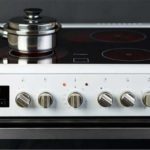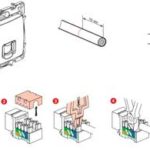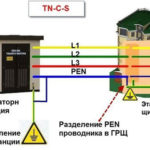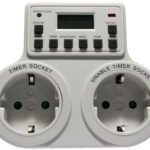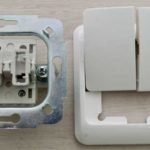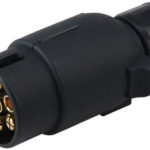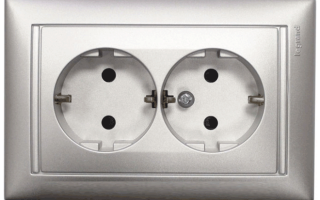When laying electrical wiring in homes or apartments are selected fittings, which include and outlets. They must meet the requirements of reliability, quality and aesthetics. There is a wide range of these products on the market, both domestic and imported, which makes it difficult to choose, especially for inexperienced buyers. Electricity should not get on the parts and housing of these devices. Therefore, each outlet must be grounded.
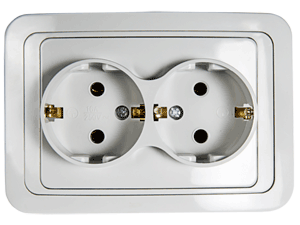
Table of Contents
Why do I need grounding in a socket?
All grounded outlets have 3 pins that are for the phase, neutral, and grounding wires. The last goes to the electrical panel, where it is connected to the terminal with the same name.
Such products are used for rooms with wiring consisting of three wires. If it is equipped with two-wire, then the socket will not perform protection against electric shock. Therefore, it is necessary to replace such wiring.
It is most dangerous to operate appliances with a metal housing and those that come in contact with water when working without grounding.
Features of installing a grounded outlet
The socket with grounding is simple to connect. Anyone who is familiar with the theory and is attentive when carrying out the installation will be able to cope with this task.
Before installation, you need to determine the type of wiring. To do this, disassemble the old conventional socket, after which the number of wires is visible. If their number is two, then there is only a phase and neutral, and there is no grounding.
When buying pay attention to the body of the grounded socket. It should not have any damage. For residential areas, these devices are selected with aesthetic properties in mind. Most of them correspond to "indoor" outlets, which are built into a small niche in the wall.
The rating is given on the back of the device. For a home electrical outlet the value should be 30-100 mA. Domestic ones are rated for 6.3 and 10 amps, while foreign ones are rated for 10 or 16 amps.
Preference in the range is given to those that are designed for most of the electrical appliances used in the home. Euro socket with grounding has a greater distance between the holes and their larger diameter. From a properly selected device, the plug is removed with a minimum of effort.
The product is available on the market in the following range:
- for powerful equipment - withstand a current of 20 A and above, sold with a special plug;
- equipped with lightning protection - used in regions with increased lightning activity;
- having special curtains that protect people from accidental contact with the contacts;
- Equipped with a leakage current protector - used mainly in children's rooms;
- With overvoltage protection - used for expensive equipment;
- those equipped with overload protection with a built-in fuse which burns out first in a short-circuit.
Before deciding how to install the socket, you need to choose a sub-socket. Purchase of the latter is made depending on what material the wall is made of. Mount his box should be in a special recess, located inside the base.
When buying pay attention to the contacts of the product. They should be metal. The body of the sockets are made of ceramic.
A positive point for the receptacle is the presence of a screw clamp. Inside there are two plates, between which the wires are passed. The screw fixation helps to secure the contacts well and prevents them from loosening during operation.

To determine how to connect the socket correctly, you can use a tester. The power supply is disconnected at the switchboard, wires are routed in different directions.
The grounding of outlets in the apartment is due to the fact that it is unaesthetic to use a round bar or a metal bus as grounding conductors, which are used in this capacity on the production sites.
In those homes built after 2003, provide for the laying of a five-core riser. In it, one of the wires acts as the conductor that provides the electrical connection to the ground.
When TN-C-S or TN-S systems are used indoors, the question of how to ground the socket is solved simply. The devices have N- (neutral) and PE- (protective) conductors and one to three L-phase wires connected in the main switchboards. Here are the busbars to which the earth, neutral and phase conductors from the apartment are connected. The grounding busbar is connected to the housing of the switchboard, made of metal.
The grounding of the outlets in the apartment is done as follows:
- the power supply is disconnected;
- The zero and the phase are connected to the terminals located near the holes (they are pre-determined by the tester or the indicator);
- grounding cable is connected to the terminals located in the center of the socket.
When installing double, triple products in the same socket, jumper terminals between the devices are connected. Wires with terminals do not clamp strongly, as this contributes to their fracture. After these steps, the grounded socket is placed in its place in the wall and secured with staple feet.
There is another system, common in older houses, called TN-C. It is necessary to consider how to ground the outlet in it.
This system consists of two or four-core cables. Some people use grounding instead of grounding when wiring the outlet. In this case, the protection is mainly reduced to the prevention of short circuits through an automatic switch-off. But it is not able to protect people from electrocution.
In this case, there are two ways out:
- Contact the power supply companies, which carry out the grounding of the neutral wire, changing all the wiring. Grounding is then brought to all outlets.
- RCD fuses are built into the circuit that powers the most powerful appliances. In the event of a breakdown, they will not protect against electrocution, but they will save you from death.
Incorrect connection - what to look for?
When wiring grounded outlets, a major mistake is installing them on a wire that has two conductors. The neutral wire is like a ground. It is life-threatening to install a neutral jumper to the ground terminal.
This should not be done for the following reasons:
- if the neutral conductor insulation is damaged, it will cause a phase to ground fault on the equipment, which will result in inoperable appliances, while making the outlet appear to be safe;
- in this system, each core is the same color, which can cause phase and neutral to be reversed, causing phase voltages to enter the housings of outlets.
When wiring grounded outlets, heating and water pipes should not be used as the latter. This is due to the fact that if the neighbors decide to replace the metal communications with plastic ones, there will be a gap, which will create stray currents that contribute to electrical injuries.
How do I check the grounding in an outlet?
You will need a multimeter and a tester screwdriver for this. If there are different colored wires, there is black and brown insulation on the phase. Check first with a tester by inserting it alternately into the holes of the socket. The indicator will turn on when the phase is touched.
Subsequently, the presence of grounding is checked with a multimeter. The center or the top of the socket (its grounding) is touched with one probe, introducing the second one alternately into its holes.
The absence of voltage between conductors indicates the following:
- neutral-earthing - about the jumper between them;
- phase-ground - about the absence of the latter;
- phase-neutral - breakage of the latter.
If the ground is working properly, during the measurement of the voltage between the ground and the neutral the instrument readings must be different from 0, and the maximum result must not exceed 90 V.
What to do if there is no ground loop in a multi-storey house?
Two ways out of this situation have already been demonstrated (replacing all the wiring in the house and installing RCD fuses). But the latter provides only instantaneous protection, while working in conjunction with the earthing switch.
Therefore, the right choice is to replace two-core cables with three-core cables. It is necessary to arrange for an earthing circuit at the back of the house. The earthing conductor is routed to the individual apartments by means of a copper bus having equal or greater cross-section than the PEN conductor which is included in the cable to the house.
Before grounding the socket, a protective circuit must be constructed. Not far from the blind area (at least 1.5 m) make triangular trenches with sides of 1.2 m to a depth of 0.6 m. Additional trench is dug to the blind area, which will lead the grounding to the switchboard in the entrance.
In the corners of the triangle, metal pipes or corners of small diameter with a length of 2.5 m are hammered.
Their tops are connected by welding metal ties (40x4 mm steel strips of the required length).
After a grounding line from this design conduct to a distributive case of an entrance:
- from the nearest apex of the triangle along an additional trench lay a steel strip of the same cross-section as the metal tie;
- Its end is fixed to the house wall with a dowel-nail;
- the set structure is covered with earth and rammed.
After extending the grounding line to the switchboard in the entryway, each owner will be able to run their grounding tires to it by connecting them to the main grounding tire. By performing these time-consuming, but not complicated actions find a solution to make grounding in an old house.
Related articles:
